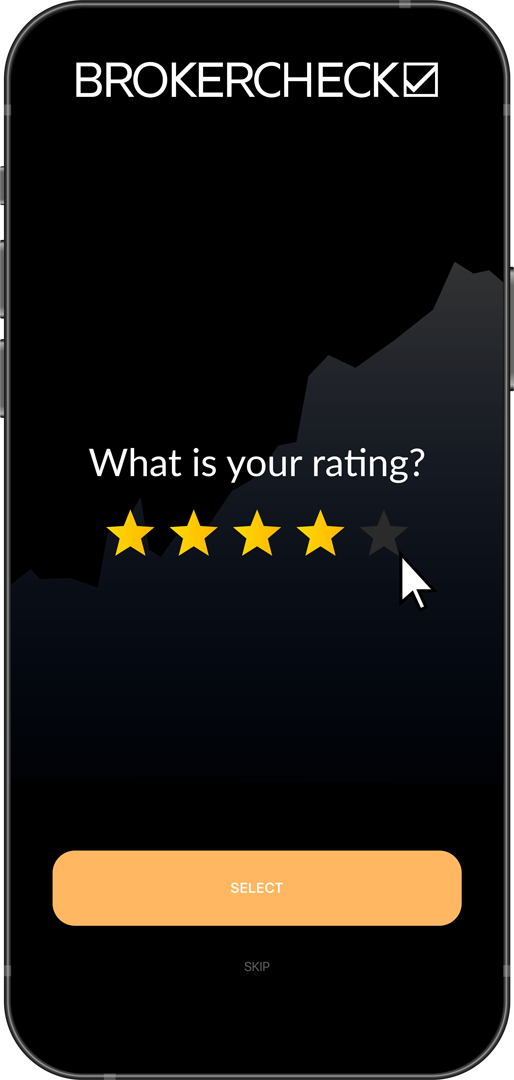1. Understanding Trading Oscillators
Trading oscillators are a critical tool in the arsenal of any trader. They are mathematical formulas that are plotted as graphs on your trading chart to help predict future price movements. Oscillators provide valuable information about market conditions that could potentially lead to profitable trading opportunities.
So, how do trading oscillators work? They operate within a band or a set range, typically between zero and 100, and signal overbought or oversold conditions. When the oscillator moves to an extreme high, it’s an indication that the asset is overbought, and there could be a potential downward correction. Conversely, when it moves to an extreme low, it suggests that the asset is oversold and there could be an upward price correction.
Types of trading oscillators include the Relative Strength Index (RSI), Moving Average Convergence Divergence (MACD), and the Stochastic Oscillator. The RSI measures the speed and change of price movements, while the MACD is a trend-following momentum indicator that shows the relationship between two moving averages of a security’s price. The Stochastic Oscillator compares a particular closing price of a security to a range of its prices over a certain period of time.
Each oscillator has its unique characteristics and ways of interpretation. But, the common thread among them is their goal: to predict price changes and generate trading signals that can help traders maximize their returns. It’s important to remember that while oscillators can be incredibly useful, no single tool should be used in isolation. They should be part of a comprehensive trading strategy, complemented by other technical analysis tools and fundamental research.
Understanding trading oscillators and how to interpret their signals is a crucial skill for any trader. Whether you’re a seasoned pro or a beginner, getting to grips with these tools can give your trading game a significant boost. So, next time you’re analyzing a trading chart, don’t forget to check out the oscillators. They might just hold the key to your next successful trade.
1.1. Definition of Trading Oscillators
Trading Oscillators are a family of indicators that traders use to predict market direction by analyzing the speed, or momentum, of price movements over a set period of time. These powerful tools work on the principle that momentum changes direction before price. In essence, they provide a graphical representation of the speed at which prices are changing, offering traders a method to spot potential market reversals before they happen.
At the heart of oscillators is a simple mathematical concept: they are derived from price data, and their values fluctuate above and below a central point, or “zero line”. This oscillation gives them their name, and it is this movement that traders interpret to make informed trading decisions.
The beauty of oscillators lies in their versatility. They can be used in both trending and range-bound markets, providing valuable insight into potential entry and exit points. When used in conjunction with other technical analysis tools, they can provide a powerful framework for identifying market trends and making strategic decisions.
Among the most popular trading oscillators are the Relative Strength Index (RSI), the Moving Average Convergence Divergence (MACD), and the Stochastic Oscillator. Each of these oscillators has its own unique formula and interpretation, but all serve the same fundamental purpose: to help traders identify potential market turning points by analyzing the momentum of price changes.
While oscillators can be incredibly useful tools, it’s important to remember that they are not infallible. Like any trading tool, they should be used as part of a comprehensive trading strategy, taking into account other factors such as price action, market conditions, and risk management. Understanding how to use them effectively requires practice, patience, and a solid understanding of the underlying market dynamics.
1.2. Importance of Trading Oscillators
Trading oscillators are a vital cog in the machinery of financial trading, providing traders with an indispensable tool to navigate the choppy waters of the financial markets. They are like the compass that guides the trader, offering a clear direction amidst the often confusing fluctuations in market prices.
Oscillators serve a dual purpose. Firstly, they identify overbought or oversold conditions in the market. This helps traders to anticipate a potential reversal in the price trend, enabling them to capitalize on these market conditions. When the oscillator reaches an extreme value, it’s a signal that the current trend is likely to reverse, providing an opportunity for traders to get in or out of the market at the right time.
Secondly, oscillators provide confirmation of a trend. They do this by comparing the price of a security to its price range over a specific period. This helps traders to confirm whether the current trend is strong and likely to continue, or weak and likely to reverse.
Trading oscillators also highlight divergence, which occurs when the price of a security and an oscillator move in opposite directions. This is often a strong signal that the current price trend is weakening and a reversal may be imminent.
In essence, the importance of trading oscillators cannot be overstated. They are a powerful weapon in a trader’s arsenal, helping to identify potential trading opportunities, confirm trends, and anticipate market reversals.
1.3. How Trading Oscillators Work
Trading oscillators are a crucial tool in the arsenal of any successful trader. They act as a compass, guiding traders through the tumultuous seas of the financial markets. But how do they work? At their core, oscillators are a type of technical indicator that fluctuate over time within a band.
The key to understanding oscillators lies in their name – they oscillate. This means they move back and forth, or oscillate, between two extremes. These extremes are typically represented as overbought and oversold levels. When an oscillator reaches an extreme level, it signals that a reversal may be on the horizon. This makes them invaluable for identifying potential market turning points.
There are many different types of oscillators, each with their own unique characteristics. For instance, the Relative Strength Index (RSI) measures the speed and change of price movements, while the Moving Average Convergence Divergence (MACD) tracks the relationship between two moving averages of a security’s price.
Interpreting oscillator signals is an art in itself. Generally, when an oscillator moves into the overbought territory, it may signal that the market is becoming overextended and a downward correction could be imminent. Conversely, when it moves into the oversold territory, it can indicate that the market may be undervalued, and a price increase could be on the cards.
However, it’s important to remember that oscillators are not infallible. They should be used in conjunction with other technical analysis tools and methods. While they can provide valuable insights and signals, they are not a guarantee of future performance. Always use them as part of a broader, more comprehensive trading strategy.
2. Popular Types of Trading Oscillators and Their Use
Relative Strength Index (RSI) is one of the most popular trading oscillators used by traders worldwide. This tool is used to identify when a market might be overbought or oversold, providing valuable insights into potential market reversals. Essentially, the RSI compares the magnitude of recent gains to recent losses in an attempt to determine overbought and oversold conditions of an asset.
Another widely used oscillator is the Stochastic Oscillator. This tool compares a particular closing price of a security to its price range over a certain period of time. The theory behind this oscillator is that in an upward-trending market, prices will typically close near their high, and during a downward-trending market, prices will close near their low. Traders use this tool to predict price turning points by comparing the security’s closing price to its price range.
MACD (Moving Average Convergence Divergence) is another oscillator that’s highly favored among traders. This tool is used to identify potential buy and sell signals, by showing the relationship between two moving averages of a security’s price. The MACD triggers technical signals when it crosses above (to buy) or below (to sell) its signal line.
The Awesome Oscillator (AO) is a tool that measures market momentum. It does this by comparing recent market dynamics to the dynamics over a wider frame of reference. The AO can provide some insight into whether recent market moves are stronger or weaker than older moves, helping traders to identify potential opportunities.
Lastly, the Commodity Channel Index (CCI) is a versatile oscillator used by traders to identify cyclical trends not only in commodities but also equities and currencies. The CCI measures the difference between a security’s change in price and its average change in price. High positive readings indicate that prices are well above their average, which is a show of strength. On the other hand, low negative readings signal that prices are significantly below their average, indicating weakness.
Each of these oscillators offers unique insights into market dynamics and can be powerful tools in the hands of skilled traders. However, it’s crucial for traders to remember that while oscillators can provide valuable insights, they should not be the sole basis for any trading decision. They are best used in conjunction with other technical analysis tools and strategies.
2.1. Relative Strength Index (RSI)
In the realm of trading oscillators, few stand as tall as the Relative Strength Index (RSI). This dynamic tool, developed by J. Welles Wilder Jr., is a momentum oscillator that measures the speed and change of price movements. It’s a go-to for traders worldwide, and for good reason.
The RSI oscillates between zero and 100. Traditionally, and according to Wilder, RSI is considered overbought when above 70 and oversold when below 30. Signals can also be generated by looking for divergences, failure swings, and centerline crossovers. RSI can also be used to identify the general trend.
Despite its prevalence, the RSI isn’t a standalone tool. It’s most effective when used in conjunction with other indicators and technical analysis tools. For instance, traders often couple the RSI with the Moving Average Convergence Divergence (MACD) to confirm potential trend reversals.
The beauty of the RSI lies in its versatility. It’s applicable to any market – be it forex, stocks, indices, or commodities. Furthermore, it suits any trading style, from day and swing trading to traditional long-term investing.
However, the RSI isn’t infallible. It’s important to remember that while the RSI is a powerful tool, it’s not a predictor of price direction. Rather, it’s a tool that can help traders identify potential reversal points. The key to successful trading with the RSI, like any tool, is to understand its strengths and weaknesses and use it as part of a broader trading strategy.
In the end, the RSI remains a staple in the trader’s toolbox – a testament to its enduring value and versatility in the ever-changing market landscape.
2.2. Moving Average Convergence Divergence (MACD)
Moving Average Convergence Divergence (MACD) is a trend-following momentum indicator that reveals the connection between two moving averages of a security’s price. The MACD is calculated by subtracting the 26-period Exponential Moving Average (EMA) from the 12-period EMA. The result of that calculation is the MACD line. A nine-day EMA of the MACD, called the “signal line,” is then plotted on top of the MACD line, which can function as a trigger for buy and sell signals.
To trade using the MACD, traders look for signal line crossovers, centerline crossovers, and divergences to generate signals. For instance, a bullish signal is present when the MACD line crosses above the signal line, or when the MACD line crosses above zero, which is the centerline. Conversely, a bearish signal is present when the MACD line crosses below the signal line, or when the MACD line crosses below zero.
What sets the MACD apart from other oscillators is its capacity to gauge the strength of a trend alongside its direction and duration. This makes it an indispensable tool for traders who rely on trend-following strategies. However, like any other technical analysis tool, the MACD is not infallible and should be used in conjunction with other indicators to increase its reliability and reduce the risk of false signals.
The MACD’s versatility and effectiveness in identifying long-term trends make it a favorite among many traders. It is a tool that can provide valuable insight into the often unpredictable world of trading, helping traders to navigate their way to success.
2.3. Stochastic Oscillator
The world of trading oscillators is vast and varied, but few stand out quite like the Stochastic Oscillator. This powerful tool, developed by George C. Lane in the 1950s, is a momentum indicator that compares a particular closing price of a security to a range of its prices over a certain period of time.
The Stochastic Oscillator is displayed as two lines. The main line is called “%K”. The second line, called “%D”, is a moving average of %K. The Stochastic Oscillator always ranges between 0 and 100. A reading of 0 indicates that the security’s close was the lowest price that the security has traded during the preceding x-time periods. A reading of 100 indicates that the close was the highest price that the security has traded during the preceding x-time periods.
This oscillator is used by traders to predict where a price will go next. When the Stochastic Oscillator rises above 80, it is often considered overbought, and it might be a good time to sell. Conversely, when it drops below 20, the security is considered oversold, and it might be a good time to buy.
However, it’s important to remember that, like all oscillators, the Stochastic Oscillator is best used in conjunction with other technical analysis tools. It can provide valuable insights, but it should not be the sole factor in making a trading decision.
Understanding the Stochastic Oscillator can help traders gain a deeper understanding of market dynamics and make more informed decisions. It’s a powerful tool in the right hands, and its potential should not be underestimated.
3. Choosing the Right Oscillator for Your Trading Strategy
Choosing the right oscillator for your trading strategy is like picking the right tool for a job; it can make all the difference between success and failure. Oscillators are technical analysis tools that help traders identify possible market turning points. However, not all oscillators are created equal, and the right one for you will depend on your strategy, trading style, and the market conditions.
Relative Strength Index (RSI) is a popular oscillator that measures the speed and change of price movements, helping traders identify overbought and oversold conditions. It ranges from 0 to 100, with readings above 70 indicating overbought conditions and readings below 30 indicating oversold conditions. If you trade on short-term price swings, the RSI may be the right choice for you.
Stochastic Oscillator, on the other hand, compares a particular closing price to a range of its prices over a certain period. This oscillator generates values between 0 and 100, and like the RSI, readings above 80 are considered overbought while readings below 20 are considered oversold. Traders who focus on trend reversals may find the Stochastic Oscillator more useful.
MACD (Moving Average Convergence Divergence) is another popular oscillator that shows the relationship between two moving averages of a security’s price. The MACD triggers technical signals when it crosses above (to buy) or below (to sell) its signal line. This oscillator is best suited for traders who prefer to follow trends and momentum.
Each oscillator has its strengths and weaknesses, and what works best will depend on your trading style and the specific market conditions. Therefore, it’s essential to test different oscillators with your trading strategy before deciding on the one that works best for you. Remember, the right oscillator can provide valuable insights into market conditions, helping you make more informed trading decisions.
3.1. Factors to Consider
Choosing the right trading oscillator is a crucial step towards successful trading. However, there are several factors to consider when making this decision.
Market Conditions: Market conditions can greatly affect the performance of an oscillator. Some oscillators work best in a trending market, while others are more effective in a ranging market. Therefore, understanding the current market condition and how it aligns with the strengths of your chosen oscillator is essential.
Time Frame: Different oscillators may perform better on different time frames. For instance, some may provide more accurate signals on a daily chart, while others may be more effective on an hourly or minute chart. It’s important to choose an oscillator that matches your preferred trading time frame.
Trading Style: Your trading style can also influence which oscillator is best for you. If you’re a swing trader, you might prefer an oscillator that identifies overbought and oversold conditions. If you’re a momentum trader, an oscillator that measures the speed and change of price movements may be more suitable.
Signal Accuracy: Not all oscillators are created equal when it comes to signal accuracy. Some might provide more false signals than others. It’s crucial to backtest your chosen oscillator to ensure it provides reliable signals for your trading strategy.
Risk Management: Finally, no oscillator should be used in isolation. It’s important to combine your oscillator with other technical analysis tools and risk management strategies to maximize your trading success. Remember, the goal is not to find a ‘magic bullet’ oscillator, but to find one that complements your overall trading approach.
By carefully considering these factors, you can select the best trading oscillator for your needs and improve your chances of trading success.
3.2. Combining Oscillators for More Robust Analysis
Trading oscillators are a trader’s best friend, providing valuable insights into market trends and potential reversals. But did you know that combining different oscillators can lead to a more robust analysis and, by extension, better trading decisions? It’s like having a team of expert advisors at your disposal, each one offering a unique perspective on the market’s movements.
Stochastic oscillator, for example, is a momentum indicator that compares a particular closing price of a security to a range of its prices over a certain period of time. It’s perfect for identifying overbought and oversold conditions. Pair it with the Relative Strength Index (RSI), which measures the speed and change of price movements, and you have a dynamic duo that can help you identify potential reversals before they happen.
MACD (Moving Average Convergence Divergence), on the other hand, is great for identifying new trends. Combine it with the Bollinger Bands, which provide information about price volatility, and you can not only spot a new trend but also gauge its strength.
Of course, these are just a few examples. The beauty of combining oscillators is that you can mix and match them to suit your trading style and the specific market conditions. So don’t be afraid to experiment and find the combination that works best for you. After all, in the fast-paced world of trading, having a robust analysis can make the difference between success and failure.
3.3. The Role of Personal Preference and Comfort
In the world of trading, one size does not fit all. Your trading experience is as unique as you are, and your choice of trading oscillator should reflect that. The role of personal preference and comfort cannot be understated. It’s your trading style that dictates your choice of oscillator, not the other way around.
Do you prefer a smooth, slower-paced trading environment? Then you might find the Relative Strength Index (RSI) oscillator more to your liking. On the other hand, if you thrive in a fast-paced, high-volatility trading environment, the Stochastic Oscillator might be your go-to tool.
Comfort is crucial in the trading world. It’s about finding an oscillator that you understand and can use effectively. If you’re not comfortable with the way an oscillator presents information, or if you find it confusing, then it’s probably not the right tool for you.
Remember, oscillators are tools, not magic wands. They can provide useful insights, but they can’t make your trading decisions for you. It’s up to you to interpret the information they provide and make your own informed decisions.
Personal preference and comfort play a significant role in this process. So, take the time to experiment with different oscillators. Find the one that fits your trading style and comfort level. And remember, the best oscillator for you is the one that helps you make the most informed trading decisions.
4. Common Mistakes When Using Oscillators and How to Avoid Them
Overreliance on a single oscillator is a common pitfall for many traders. While oscillators can provide valuable insights into market conditions, they should never be used in isolation. Different oscillators can provide different perspectives on the market, and utilizing a combination of them can help to confirm signals and avoid false positives.
Ignoring divergences is another frequent mistake. Divergences occur when the price of an asset and an oscillator move in opposite directions and can often signal a potential market reversal. Traders who fail to recognize these divergences may miss significant trading opportunities.
Failing to adjust oscillator settings can also lead to inaccurate readings. The default settings on most oscillators may not be suitable for all market conditions or timeframes. Traders should regularly review and adjust these settings to ensure they are getting the most accurate signals.
Misinterpreting overbought and oversold conditions is the fourth common mistake. Just because an oscillator indicates an overbought or oversold condition, it doesn’t mean that a reversal is imminent. Price can remain overbought or oversold for extended periods during strong trends, and acting on these signals alone can lead to premature and potentially loss-making trades.
To avoid these mistakes, traders should combine oscillators with other technical analysis tools, such as trend lines, support and resistance levels, and chart patterns. They should also backtest their oscillator-based strategies on historical data to ensure they perform as expected in different market conditions. Lastly, ongoing education and practice are crucial. The more traders understand about how oscillators work and how to use them effectively, the better their trading decisions will be.
4.1. Relying Solely on Oscillators
Trading oscillators are a trader’s best friend, a beacon of light in the foggy world of financial markets. They help traders navigate the choppy waters of the stock market by providing valuable insights into the market’s potential turning points. However, relying solely on oscillators can be as dangerous as sailing a ship without a compass.
Oscillators are technical analysis tools that are used to identify periods of overbuying or overselling in the market. They oscillate between two extreme values, providing a visual representation of the speed at which the price is changing. This can be incredibly useful in predicting potential reversals in the market. However, they are not infallible.
False signals are a common issue with oscillators. A market can remain overbought or oversold for a long time, and an oscillator may signal a reversal that doesn’t materialize. If a trader places a trade based solely on this signal, they could incur significant losses.
Another issue is that oscillators often lag behind the market. They are based on historical data, which means they are always a step behind the current market action. If a trader relies solely on an oscillator, they may miss out on significant market moves.
Market context is also crucial. Oscillators work best in trending markets, and their effectiveness can decrease in range-bound markets. Without understanding the broader market context, a trader may misinterpret an oscillator’s signals.
In essence, while oscillators are powerful tools, they should not be used in isolation. They are most effective when used in conjunction with other technical analysis tools and fundamental analysis. By combining different types of analysis, traders can gain a more complete understanding of the market and make more informed trading decisions. So, remember, don’t put all your eggs in one oscillator basket. The financial markets are a complex ecosystem, and it takes a diverse set of tools to navigate them successfully.
4.2. Ignoring Overbought and Oversold Levels
In the dynamic world of trading, it’s easy to fall into the trap of relying heavily on overbought and oversold levels. However, these levels are not foolproof and can often lead traders astray. A common misconception is that an overbought market will immediately result in a price decline, while an oversold market will lead to a price increase. This isn’t always the case.
Overbought and oversold are terms used to describe a situation where a trading oscillator has reached an extreme. An oscillator is a technical analysis tool that is banded between two extreme values and built with the results from a trend indicator for discovering short-term overbought or oversold conditions. When the market is overbought, the oscillator reaches the high extreme and when the market is oversold, it reaches the low extreme.
However, these extremes are not always a signal to buy or sell. Markets can remain overbought or oversold for extended periods during a strong uptrend or downtrend. Acting solely on these signals could lead to premature buying or selling, potentially resulting in losses.
Instead, traders should use these levels as a guide and consider them in conjunction with other technical analysis tools. For example, a trend line break on the price chart may confirm an oscillator’s move out of overbought or oversold territory. Similarly, divergence between the oscillator and price action may suggest an impending market reversal.
In essence, while trading oscillators and their overbought and oversold levels can be useful, they should not be used in isolation. A holistic approach, considering multiple indicators and market conditions, can help traders make more informed decisions and potentially increase their chances of trading success.
4.3. Neglecting to Confirm Signals with Other Indicators
Trading oscillators are a powerful tool in a trader’s arsenal, however, they should not be used in isolation. A common pitfall many traders fall into is relying solely on a single oscillator to make trading decisions. This is akin to navigating a stormy sea with only a compass, while ignoring the radar and GPS.
Confirmation from multiple indicators is crucial to avoid false signals and mitigate risks. For instance, if your preferred oscillator signals a buy, but other indicators such as moving averages, Bollinger Bands, or volume indicators do not support this signal, it is prudent to hold off on the trade.
Pairing oscillators with other indicators can not only confirm the validity of a signal, but also provide a more holistic view of market conditions. For example, the RSI oscillator might indicate an overbought condition, but a look at the MACD could reveal a strong upward trend. In such a scenario, the market might still have room to run, despite being technically ‘overbought’.
Understanding the limitations of oscillators is as important as understanding their strengths. Oscillators tend to perform well in trending markets, but can give false signals in a range-bound market. This is where other indicators can play a significant role in validating or refuting the oscillator’s signal.
In the world of trading, there is no ‘one-size-fits-all’ solution. It’s about finding the right combination of tools that aligns with your trading strategy and risk tolerance. Remember, the goal is not to win every trade, but to make more informed decisions, manage risk effectively, and ultimately, improve your overall trading performance.
4.4. Misinterpreting Divergence
Divergence, a term that often sends a shiver down the spine of traders, can be a double-edged sword. It’s a phenomenon that arises when the price of an asset and an indicator, such as an oscillator, move in opposite directions. This discrepancy often signals a potential reversal in the market trend, making it a critical aspect to monitor in your trading strategy.
However, one common pitfall that traders fall into is misinterpreting divergence. This misunderstanding can lead to costly mistakes. For instance, seeing divergence where there isn’t any, or misreading the type of divergence, can lead to misguided trading decisions.
Regular divergence and hidden divergence are the two main types of divergence that traders need to be aware of. Regular divergence often signals a reversal of the current trend. It occurs when the price makes a higher high (in an uptrend) or a lower low (in a downtrend), but the oscillator does the opposite.
On the other hand, hidden divergence is a confirmation of the current trend. It happens when the price makes a lower high (in an uptrend) or a higher low (in a downtrend), but the oscillator does the opposite.
Understanding these nuances is crucial for successful trading. It’s not just about identifying divergence, but correctly interpreting it. Misinterpretation can lead to false signals and, consequently, unsuccessful trades.
Remember, oscillators are not foolproof. They are tools to aid in your decision-making process, not to dictate your every move. While divergence can be a powerful signal, it should not be the sole basis for your trading decisions. Always consider other factors such as market conditions, news events, and your risk tolerance. Trading is a game of probabilities, not certainties.











